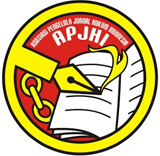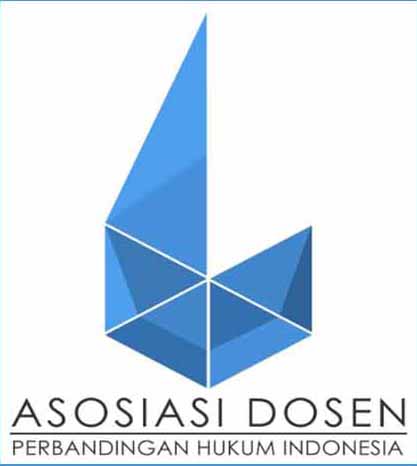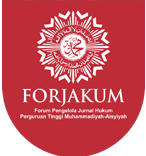The Legitimacy of Ondoafi in Conflict Settlement of Customary Land Tenure in Sentani, Papua
Abstract
The charismatic power of ondoafi as a leader in customary government can determine the direction of the policy including the resolution of problems of indigenous people. In the new order Era, ondoafi was not involved further in resolving land issues, so he would not be labeled as part of the Free Papua Movement (OPM). In the Special Autonomy era, the roles of ondoafi got stronger as indicated by the privileges given by the government to indigenous people in Papua. This paper explores the roles of ondoafi in resolving the conflict over the customary land in Sentani, Jayapura, Papua, using a qualitative approach with secondary data. The result of the research shows that ondoafi could not resolve the conflict over the customary land in Sentani effectively due to the discrepancy of values between the conflicting parties. Nevertheless, ondoafi should become a mediator to resolve the conflicts between indigenous people and non-indigenous people; including privates or corporates and the central government. An ondoafi should be able to become a diplomat who can bridge the values differences between the conflicting parties and urge the conflicting parties to understand others’ interests and values so that conflicts can be resolved in a peaceful manner.
Keywords
Full Text:
PDFReferences
Alawode. 2013. Determinants of land use conflicts among farmers in southwestern Nigeria Journal Research in Peace, Gender and Development (JRPGD) Vol. 3(4) pp. 58-67, June.
Beckert, Barbara, Christoph Dittrich, Soeryo Adiwibowo. 2014. “Contested Land: An Analysis of Multi-Layered Conflicts in Jambi Province, Sumatra, Indonesia”. Sterreichische Zeitschrift für Südostasienwissenschaften, 7 (1), 75-92.
Bottazzi, Patrick, Goguen, Adam & Rist, Stephan. 2016. “Conflicts of customary land tenure in rural Africa: is large-scale land acquisition a driver of ‘institutional innovation’?” The Journal of Peasent Studies, Vol. 43, Issue 5, 1 Januari 2016, hlm. 971-988.
Campion, Benjamin Betey and Acheampong, Emmanuel. 2014. “The Chieftaincy Institution in Ghana: Causers and Arbitrators of Conflicts in Industrial Jatropha Investments”. Sustainability, 6, 6332-6350; doi:10.3390/su6096332.
Dewi, Rosita. 2016. “Gaining Recognition Through Participatory Mapping The Role of Adat Land in the Implementation of the Merauke Integrate Food and Energy Estate in Papua, Indonesia” ASEAS – Austrian Jour-nal of South-East Asian Studies, 9(1), 87-106.
Fitriyah, Farida. 2016. Hukum Pengadaan Tanah Trasmigrasi, malang: Setara Press.
Iskandar Syah, Mudakir. 2015. Pembebasan Tanah Untuk Pembangunan Kepentingan Umum, Upaya Hukum Masyarakat Yang Terkena Pembebasan dan Pencabutan Hak. Jakarta: Jala Permata Aksara.
Kamsi. 2015. “Perilaku penistaan agama dalam struktur budaya politik lokal pada kerajaan di jawa (sebuah telaah politik hukum). As-Syir’ah, Jurnal Ilmu Syari’ah dan Hukum, Vol. 49, No. 2, Desember.
Kobu Kobu, Djestylona. 2017. “Pelaksanaan Peralihan Hak Atas Tanah Berdasakan Hukum Adat Suku Tobelo di Kabupaten Halmahera Selatan”, Lex Crimen Vol. VI/No. 2/Mar-Apr, hlm. 36-43.
Mahdi, Abdile. 2012. “Customary dispute resolution in Somalia’’ dalam jurnal African Conflict and peacebuilding riview, vol. 2, No.1, pp. 87-110.
Manji, Ambrena. 2014. “The politics of land reform in Kenya 2012”. African Studies Review 57 (1), hlm. 115-130.
Mebri, Jhon A. 2017. “Kedudukan Hak Atas Tanah Masyarakat Hukum Adat Untuk Kepentingan Umum”, DiH Jurnal Ilmu Hukum. Volume 13 Nomor 25, Februari.
Mulyadi, Tri. 2010. “Jual Beli Tanah Hak Ulayat Dengan Pelepasan Adat sebagai Syarat Pendaftaran Tanah Pada Suku Tobatdji Enj'ros di Kota Jayapura Papua”. Tesis. Semarang: Universitas Diponegoro. Tidak Dipublikasikan.
Paaga, Dominic Tuobesaane. 2013. “Customary Land Tenure and Its Implications for Land Disputes in Ghana: Case form Wa. Weehau And Lambussie” International Journal of Humanities and Social Science, Vol. 3 No. 18; October.
Pemda. 1972. Serba-serbi mengenai sejarah masuknya Papua ke Indonesia.https://www.kompasiana.com/begawan.durni/54136718745513712b6c743d/serbaserbi-mengenai-sejarah-masuknya-Papua-ke-Indonesia (Diakses: 21-09-2018, Pukul 13.22)
Pramukti, Angger Sigit & Erdah Widayanto. 2015. Awas jangan beli Tanah Sengketa. Pustaka Yustisia, Yogyakarta.
Schmidt, Betina E. and Schroder, Ingo N (eds,). 2001. Anthropology of Violence and Conflict. London: Routledge.
Socpa, Antoin. 2010. “New Kinds of Land Conflict in Urban Cameroon: the Case of the ‘landless’ Indigenous Peoples in Yaoundé” Africa 80 (04):553 – 572.
Supriyanto. 2014. Implementasi Kebijakan Pertanahan Nasional. Purwokerto: Fakultas Hukum Universitas Jendral Sudirman Purwokerto.
Thambikeni, Micky and Anael Sam. 2015. “Analysis of ICT Application InMitigating Land Conflicts: Case Study of Tanzania”. International Journal of Computer Science and Information Security (IJCSIS), Vol. 13, No. 11, November.
Yurino, Ari. 2015. http://elsam.or.id/2015/12/potret-kebijakan-pemerintah-di-tanah-Papua-selama-46-terakhir/ (Diakses 29-05-2018).
Undang-Undang Dasar Negara Republik Indonesia Tahun 1945.
Undang-Undang Nomor 5 Tahun 1960 tentang Pokok-Pokok Agraria.
Undang-Undang (UU) Nomor 21 Tahun 2001 tentang Otonomi Khusus Papua.
Undang-Undang Nomor 41 Tahun 1999 tentang Kehutanan.
Peraturan Menteri Agraria dan Tata Ruang/Kepala Badan Pertanahan Nasional Nomor 10 Tahun 2016 tentang Tata Cara Penetapan Hak Komunal Atas Tanah Masyarakat Hukum Adat dan Masyarakat yang Berada dalam Kawasan Tertentu.
DOI: https://doi.org/10.18196/jmh.20190127
Refbacks
- There are currently no refbacks.
Copyright (c) 2019 Tri Mulyadi, Kamsi Kamsi, Surwandono Surwandono, Trisno Raharjo

This work is licensed under a Creative Commons Attribution-NonCommercial 4.0 International License.
JMH Visitor






















